The Japanese are very traditional and yet enthusiastic and passionate when it comes to their food. Japan offers a great mix of history, culture, and modern comfort. Traditional Japanese food is based on the ‘rules of five’ and underlines the use of fresh and high-quality ingredients. Even the simplest food in any Japanese restaurant is carefully prepared and beautifully presented. Much thought goes into the preparation, consumption, and presentation of the food – a level of perfection and detailing, hard to find elsewhere. Japanese food preparations typically include small items, often fresh, and have simple flavors. The chefs use quality ingredients, and most Japanese food items are just seared or boiled and minimally seasoned. They hardly do any tampering to the raw food as possible to bring out the color and retain the authentic flavor of the ingredients. Simple condiments are often part of the platter to add and enhance the flavor. This is where dipping sauces, citrus, wasabi, soy sauce, miso, and pickles come into the picture. Eating out in Japan is more about the experience than the food itself.
Most people have a misconception that food in Japan mainly consists of raw seafood and sushi, but that’s not the reality. The country has a megadiverse cuisine, ranging from noodles to rice bowls and grilled meat to hot stews. Every traditional meal in Japan tastes fantastic. However, if noodles and seafood aren’t what interest you, there are plenty of western cafes and fast-food restaurants as well. We have picked 18 Japanese dishes for you to seek out when tasting this delectable Japanese cuisine:
Sushi & Sashimi
Sushi is synonymous with Japanese cuisine. When we think of Japan and its cuisine, the only thing that comes to the mind is sushi. After the Meiji Restoration in 1868, it was one of the first dishes to be exported to the US. Since then, it has been a popular dish all over the world. Sushi is raw fish served on Japanese rice seasoned in rice vinegar and mixed with different ingredients. It is truly a mix of flavors. It originated from the process of preserving raw fish in fermented rice. Some common varieties of sushi include nigiri sushi or bite-sized heaps of sushi rice with a slice of raw fish draped on top, makizushi or sushi rice and fillings wrapped in nori seaweed, and inarizushi, or sushi rice stuffed inside inari, the fried tofu.

Sashimi is often the first course in a traditional Japanese meal. These are delicate thin slices of fresh raw fish, that are served with wasabi, daikon radish, soy sauce, and pickled ginger. You should take in its subtle flavor before other dishes of more potent taste. Sashimi is all about raw fish and is never served with rice. This is what makes it different from Sushi. The chefs who prepare Sashimi, make sure the fish is fresh to minimize the risk of contamination.
Ramen
Ramen egg noodles in a savory broth are the country’s favorite late-night meal. Almost every prefecture or region in Japan has its variety of ramen, be it the rich tonkatsu ramen or the pungent miso ramen of Hokkaido. Ramen plays a significant role in Japan. Ramen is one of Japan’s famous dishes and is a perfect meal for budget travelers. Different corners of the country have different versions of this noodle soup dish, and hence, you can never really get tired of it. Traditional Ramen toppings include Kamaboko or steamed fish cake, nori seaweed, bamboo shoots, pork belly, spring onions, and egg. However, this, too, may vary depending on the region you are.
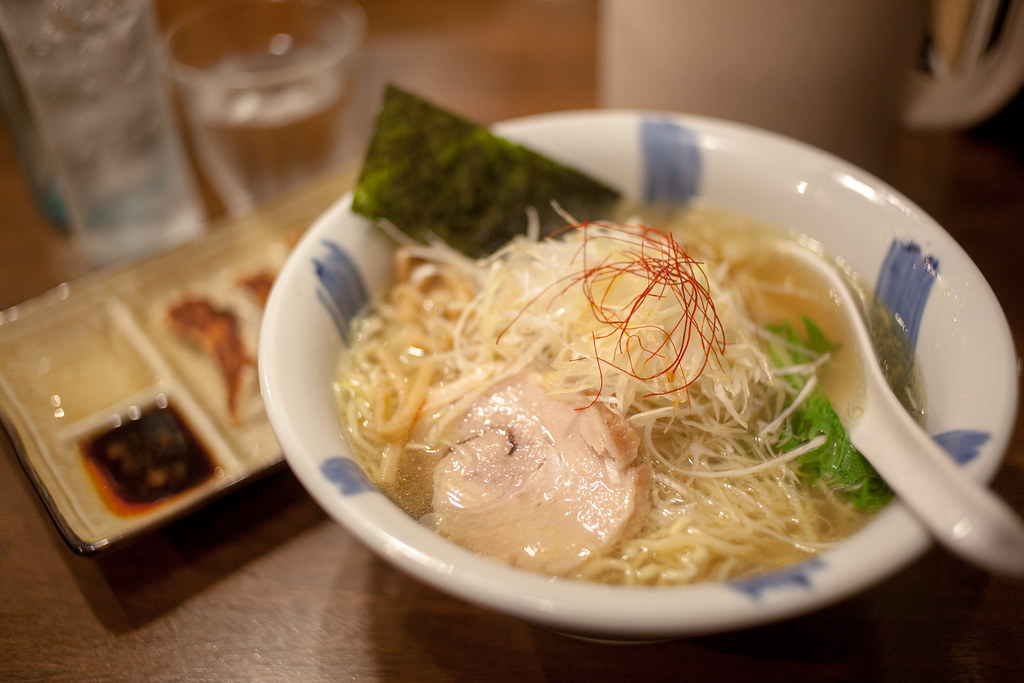
Ramen is Japan’s absolute soul-satisfying delicacy, that is cheap and widely available on every street in restaurants and ramen bars. Japanese people love Ramen so much that there is a Ramen-themed amusement park in Tokyo.
Tempura
Tempura is one of Japan’s deep-fried foods. The batter-coated vegetables like daikon, radish, pumpkin and meat, fish, or seafood are fried in sesame oil and served with soy sauce and grated radish. If you have a weakness for everything fried and crispy, every piece of Tempura prawn will be hard to resist. Although you can enjoy these on their own, restaurants and eateries serve Tempuras on top of rice bowls or noodle soups.

Kare-Raisu (Curry Rice)
This is cooked rice with a traditional Japanese curry sauce made with an assortment of vegetables and meat and is served with additional toppings such as tonkatsu. This delicious Yoshoku dish was originally introduced to the Japanese by the British during the period of the Meiji era (1868-1912). An extremely popular dish, many inexpensive Kare Raisu restaurants, can be found, especially in and around train stations in Japan.
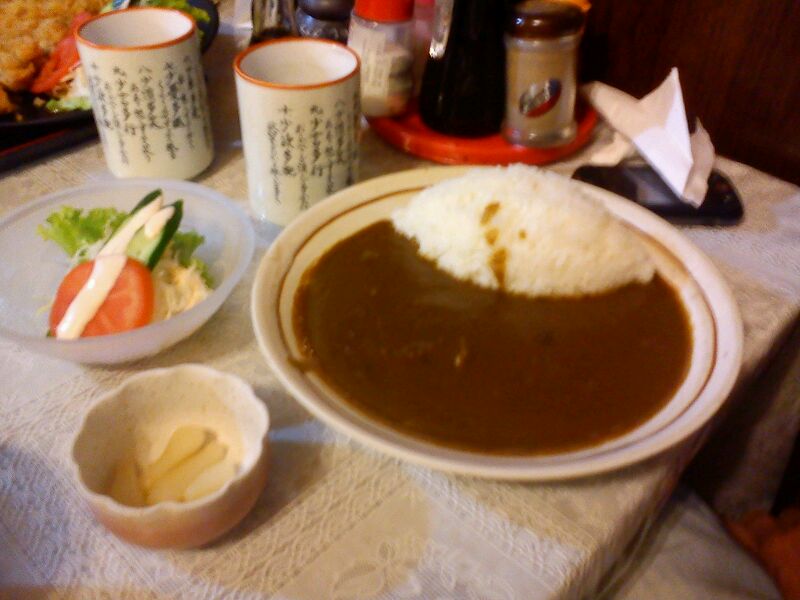
Okonomiyaki
The name Okonomiyaki means ‘grilled as you like’. This comfort food is usually a savory pancake filled with vegetables and meat and topped with mayonnaise, bacon, sauce, and seaweed or fish flakes. Also referred to as Japanese pizza, this traditional dish originated in Hiroshima and Osaka areas of Japan, though both these places have a different version of the same. Some specialty restaurants in Japan have large hotplates built into the tables on which you can cook their okonomiyaki, which makes for a wonderfully fun cooking experience.

Shabu-shabu
Shabu-shabu is a Japanese food that comprises of thin slices of beef or pork presented in a bubbling broth. It is a popular ‘Nabemono’ or Japanese hot pot. It consists of pieces of vegetables, thinly sliced meat, tofu, seafood, and mushrooms that are cooked by soaking them into a hot soup. To relinquish the taste of these bite-sized pieces, dip them into a ponzu citrus or sesame sauce.

Miso Soup
The bowl of Miso soup is prepared by mixing miso paste or fermented soybeans, in dashi or fish stock. Common additions include wakame seaweed, green onion, small pieces of tofu, and sliced aburaage, etc. A bowl of Miso soup is part of most traditional Japanese dishes and is commonly served with traditional Japanese-style meals.

Yakitori
Yakitori are chicken barbecued on a bamboo skewer, seasoned with either salt or soy sauce, and are an evening ritual for many during the weekend. This appealing dish makes use of every part of the chicken, such as the white and dark meat, hearts, gizzards, skin, and other organs. Yakitori is a common accompaniment to beer in many eateries and pubs in Japan.

Onigiri
Onigiri is the most popular snack in Japan that has a wide variety of flavors. You can season these rice balls in a different number of ways. The traditional Onigiri is filled with eggs, pork, chicken, fish, vegetables, and coated with seaweed. In contrast, sometimes they are made simple with rice and a mix of sauce, vegetables, or furikake. They are readily available in the local shops as well as in supermarkets.

Udon
The Japanese love their noodles. Among the three main types of noodles that are a massive part of Japanese food, Udon is one of them. Commonly eaten in traditional noodle soup along with flavorful garnishes, Udon, which is made of wheat flour, is thick and chewy. Udon in Japan is served hot or cold with a variety of toppings such as Tempura or Tempura Udon, fried tofu or Kitsune Udon, and mountain vegetables or Sansai Udon.

Soba
As thick as spaghetti, Soba is native Japanese noodles made of buckwheat flour that is served either hot or cold and with various toppings. They are popular and cheap fast food in Japan. Some shops in Japan cook traditional Soba, with just Tempura as a side dish. You can relish Soba noodles with the Mentsuyu sauce for a delicious taste.

Gyudon
If you visit Japan, you must head to Sukiya to have the best Gyudon. Gyudon is a delicious, yet inexpensive bowl of beef on rice and is seasoned with different spices. You may also get a salad and a miso soup on the side of the Gyudon you have ordered. Gyudon is a suitable and favorite lunch option in Japan.

Chawanmushi
Chawanmushi is comfort food in Japan that is nothing but a steamed and savory egg custard. It is made by pouring seasoned and beaten eggs into individual cups that already have fillings like chicken, mushrooms, gingko nuts, kamaboko fish cakes, and carrots. The cups are then steamed in a pot or steamer until they have set like a pudding. Chawanmushi meaning ‘steamed in a cup,’ gets its name by combining the words ‘chawan’ meaning ‘teacup’ and ‘mushi’ meaning ‘steamed’.

Soft Serve Ice Cream
These super delicious and creamy soft serve ice creams are made with a high percentage of milk fat, fresh whipped cream, and a mix of syrups, sugar and come in different flavors.
Gyoza
Gyoza is a traditional Japanese pot sticker or dumpling with a filling made of minced vegetables like chives, cabbage, mushrooms, and finely chopped ground meat. The Gyoza was first introduced to Japan by the Chinese. Gyoza is deep-fried and is commonly served as a side dish to ramen. They are of three types, such as deep-fried Agegyoza, fried Yakigyoza, and boiled Suigyoza. You can enjoy Gyoza with dipping sauces like sesame oil, vinegar, soy sauce, chili oil, or ponzu sauce. Gyoza in Utsunomiya in Japan boasts of the largest intake of gyoza per household in Japan.
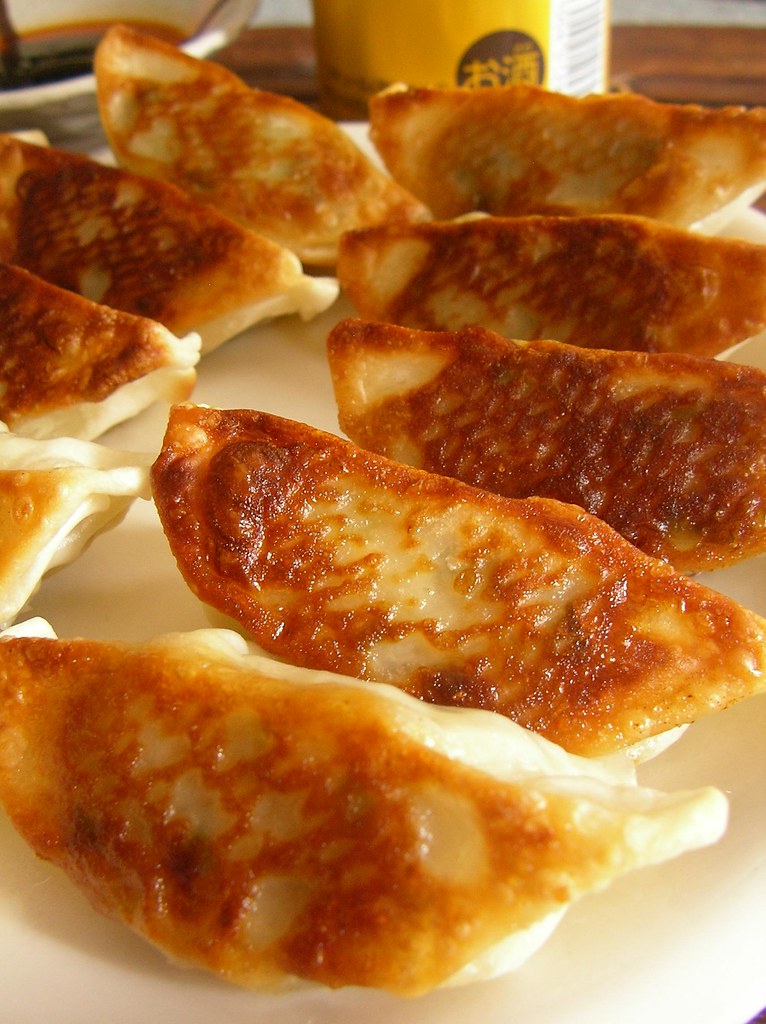
Tsukemono pickles
You can have Japanese pickles or Tsukemono in different varieties. People generally serve this with almost all traditional Japanese dishes. The Japanese make the traditional Tsukemono with vegetables like summer squash, cabbage, cucumber, eggplant, and zucchini. Valued for their unique flavors, you can use Tsukemono as a relish, garnish, palate cleanser, or merely a digestive.
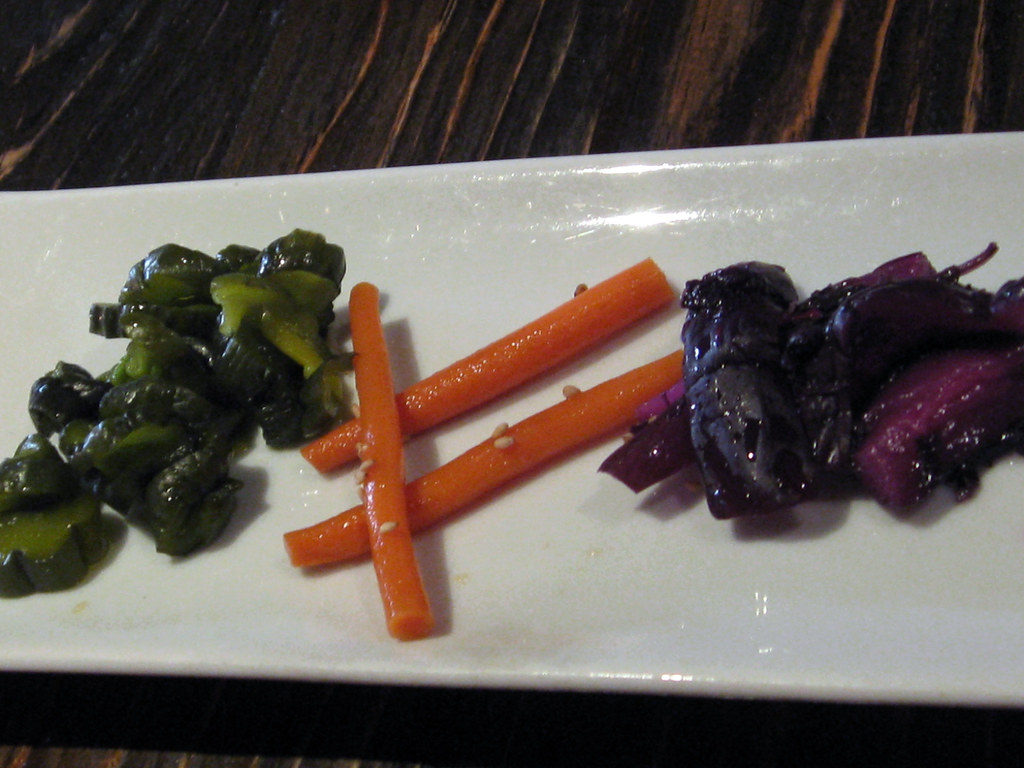
Kaiseki
Kaiseki is a multi-course comprising of seasonally themed traditional Japanese dishes meticulously prepared and presented. It is Japan’s haute cuisine that involves a dozen or more different dishes made with fresh, seasonal produce, each arranged in small servings and a different cooking technique. Kaiseki is enjoyed in specialized restaurants or at a ryokan or Japanese-style inns.
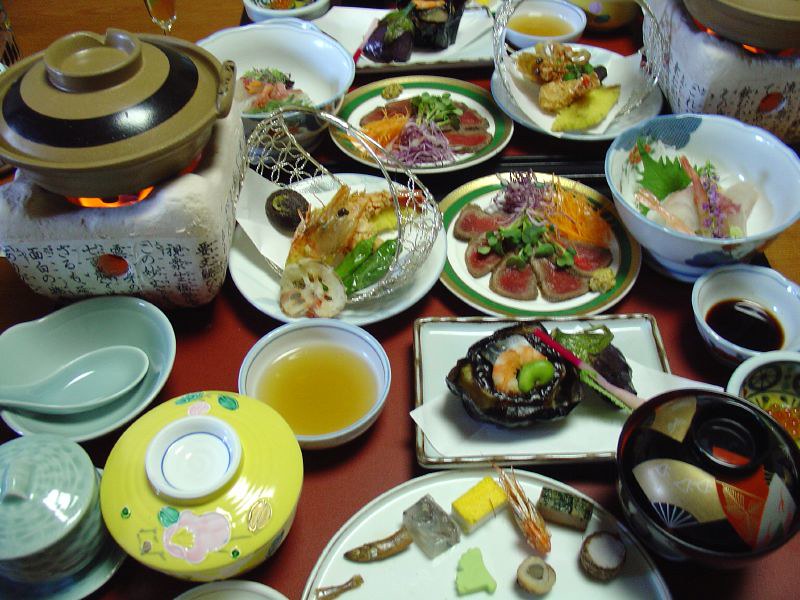
Sukiyaki
Loved in the winter months, Sukiyaki is a nabe dish of Japan prepared with thinly sliced meat, tofu, vegetables, mushrooms, and konyaku noodles simmered in a sweet soy sauce or sukiyaki broth. ‘Sukiyaki’ means ‘cook what you like,’ and the Japanese take great joy in preparing this dish for their friends and family at the table using the ingredients of their choice.
